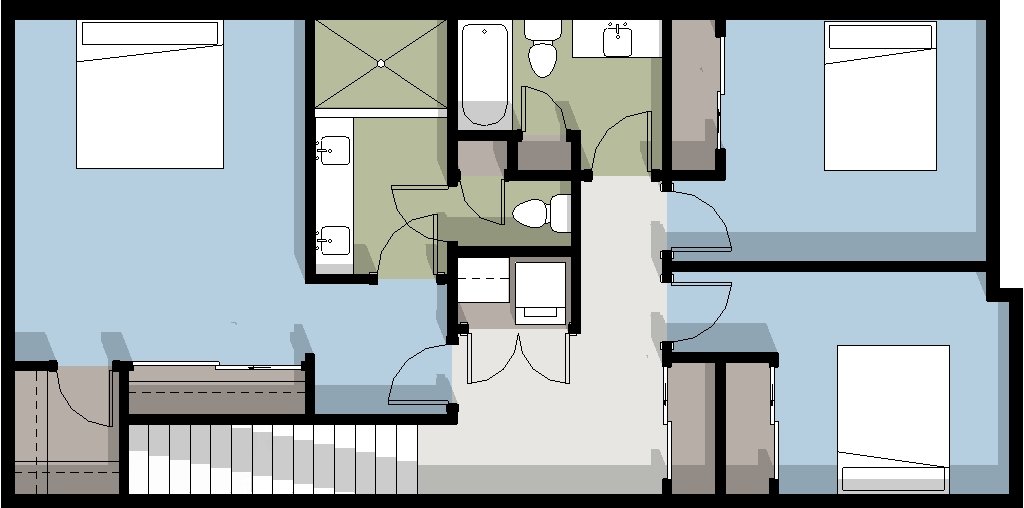The Best Strategy To Use For Janjic Architecture
Table of ContentsUnknown Facts About Janjic ArchitectureThe Facts About Janjic Architecture RevealedThe Main Principles Of Janjic Architecture Janjic Architecture Things To Know Before You Get This
Engineers are specialists that design buildings and various other structures, ensuring they are both functional and visually pleasing. They are accountable for producing areas that meet the requirements of individuals who use them while also taking into consideration safety and security, sustainability, and conformity with structure regulations. Architects take right into account safety, use, ecological impact, energy performance, and neighborhood zoning legislations while establishing styles for different kinds of frameworks, including property, commercial, public buildings, and even specialized structures like healthcare facilities and institutions.
Designers do much more than design cosmetically pleasing structures. They are associated with every phase of a building's construction, from its perception to the ribbon-cutting event. On any given day, an engineer might satisfy with customers, prepare construction documents, or see a worksite. An engineer's details duties alter from project to task, but typical obligations consist of:: Developing building concepts and styles, consisting of theoretical illustrations, 3D designs, and renderings to envision the final product.: Preparing detailed illustrations and strategies making use of sophisticated software such as AutoCAD, Revit, SketchUp, or an additional tool, ensuring that all technical specs are included.: Collaborating with customers, engineers, contractors, and various other stakeholders to integrate comments, guarantee the layout satisfies customer requirements, and keep positioning with project objectives.
: Making sure projects follow building regulations, zoning legislations, safety and security regulations, and ease of access criteria to ensure the safety, validity, and quality of the final framework. Architects put on a great deal of hats in their day-to-day job, so the abilities needed to be effective as a designer vary. Some vital abilities you need to work as an architect consist of:: Integrate visual allure with functionality to produce attractive and practical spaces.: Apply sophisticated mathematics principles, including geometry and physics, to ensure designs are safe and functional.: Fix design-related and legal problems successfully to keep jobs on track.: Make certain every facet of the design is precise to avoid setbacks.: Work together effectively with clients, engineers, professionals, and other professionals.: Job well with others to bring tasks to fruition, coordinating with different stakeholders.: Take possession of jobs and inspire teams to make certain effective implementation.
Some trainees select to make both the B - Architecture firm.Arch and the M.Arch; however, this is not a requirement for licensure. If you have a four-year bachelor's degree in style or one more self-control, you can earn an M.Arch and certify for style licensure. Ending up being a designer requires extensive training and a wide variety of coursework
The Buzz on Janjic Architecture
These training courses prepare trainees for the varied difficulties of building technique, equipping them with the abilities needed to do well in their professions. Coming to be a designer calls for commitment, creative thinking, and a clear understanding of the steps entailed. From education to licensure, this guide gives a basic roadmap for striving architects to navigate the course toward a successful occupation in architecture.
There are a few various courses to ending up being an architect, yet both detailed below are the main means:: This is a five-year undergraduate program that supplies fundamental knowledge in architectural design, background, concept, and technology. It is among the most usual paths to ending up being an architect.: The M.Arch is a graduate-level program for trainees who currently hold a bachelor's degree.
This multi-division test examinations your skills and understanding of style. The existing version of the examination is called ARE 5.0 and features 6 departments. These departments may be taken in any type of order however need to be passed within five years to get design licensure. Visit Kaplan's ARE Exam Source Facility to discover the ARE 5.0.
After obtaining your license, you can officially practice as an architect and start functioning individually or with a company. While getting a state certificate permits you to exercise within that jurisdiction, acquiring NCARB accreditation can make it less complicated to increase your technique to various other states. The NCARB Certification is a credential that promotes reciprocity, allowing you to function throughout several territories.
Some Known Factual Statements About Janjic Architecture

(http://nationadvertised.com/directory/listingdisplay.aspx?lid=62096)Building can be equivalent parts amazing and demanding. Although it's amazing to see your vision come to life, you might really feel overloaded by routines, repayments, and unanticipated scenarios. Our team believe one of the most effective tasks take place when the engineer plays an energetic function in building, and throughout the process, we remain in continuous communication with our clients and their professionals.
Little Known Questions About Janjic Architecture.
Before diving right into expectations, we should initially describe the role of a designer in building. Although a lot of an engineer's job takes place prior to building begins, they remain on the job till completion. Additionally, a designer helps with interaction between the service provider and the building proprietor. Interaction flows will vary depending on your project delivery technique.
On a lot of tasks, nonetheless, you will mostly communicate with your architect. Specifically, you can anticipate your designer to carry out the complying with tasks: Before building starts, your engineer will certainly develop assumptions with you and your specialist.
